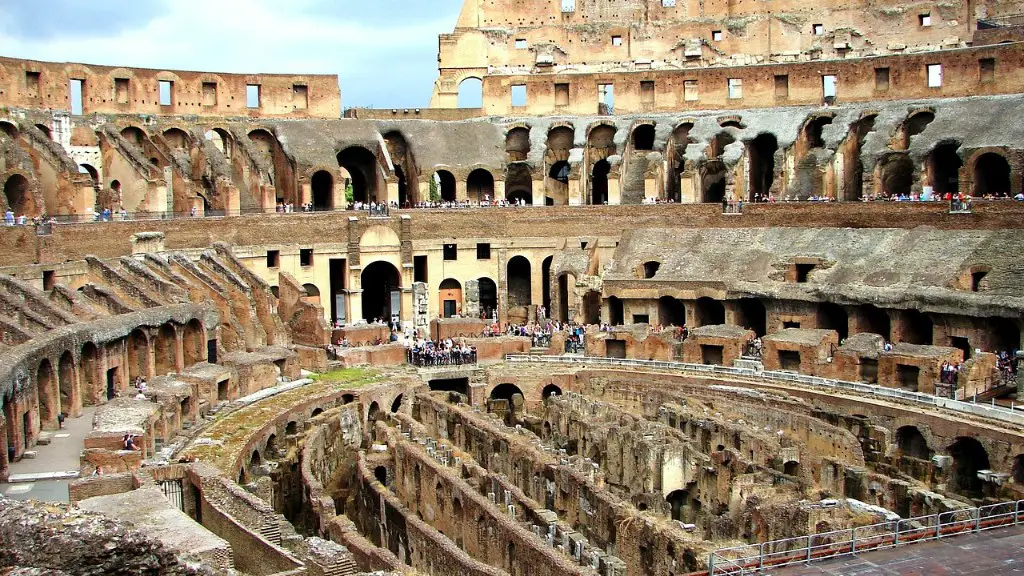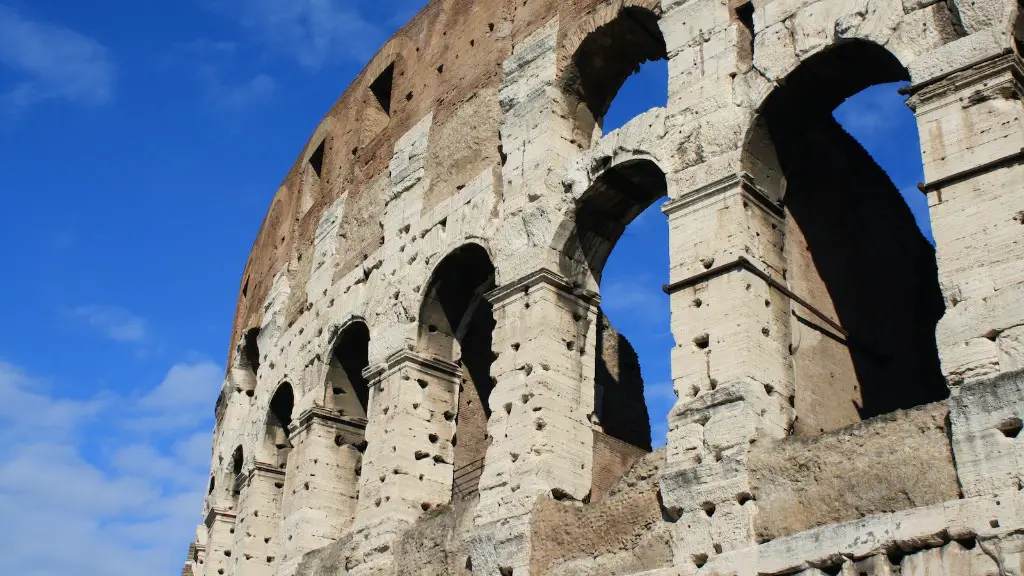Travel back in time and explore the world of ancient Rome and their general surgery practices. From the basics of what general surgery was, to the practices and procedures used, it is interesting to learn the similarities and differences between the ancient surgical processes and the modern ones. During this time period, there was a great increase in knowledge, technology, and general education devoted to medicine, which created a larger focus on general surgery.
It is believed that general surgery activities may have first started in ancient Rome as early as 200 BC. It was an important part of their medical system that was used to treat a wide range of diseases and conditions. Roman surgeons had numerous tools at their disposal, such as various scalpels, cautery tools, forceps, needles, and thread. Perhaps the most well known practice of this time period was the ligation of ligatures, which was used to cut off blood supply to a wound.
The use of anesthesia was also utilized by Roman physicians, though for a slightly different purpose than what we consider today. Practitioners primarily used wine, opium, and other narcotic substances to provide general pain relief and lessen anxiety in their patients. Specific surgical pain relief was not a focus at this time.
There were a few prominent Roman surgeons who contributed to the field of medical knowledge, such as Galen and Celsus. Galen in particular is often remembered as the “father of medicine,” as he provided extensive medical knowledge through his extensive writings and teachings. Celsus was also an important contributor to medical knowledge and his works made an impact on surgical practices.
General surgery practices were divided into two different categories, military surgery and civilian surgery. Military surgeons typically performed major operations, such as repairing fractured bones and gangrene removal, which was all done without the use of antibiotics. They did, however, make use of wolf fat and goose grease to coax out any foreign bodies from wounds.
Cellular surgery was also used, but in a more advanced way than it is today. Ancient Roman surgeons made use of a technique known as ‘lancing’, which was an incision made into an abscess or boil, in order to remove the pus. This provided relief to the patient and expedited healing.
In conclusion, it is clear that general surgery was widely practiced in ancient Rome. Roman surgeons had various tools at their disposal and were capable of performing various operations and procedures with modest success. The practice of medicine increased rapidly during this time and a plethora of knowledge was documented by notable Roman physicians. It is quite fascinating to note the similarities and differences between the ancient surgical practices and the modern ones.
Civilian Surgery
The practice of civilian surgery also played an important role in ancient Rome, as documented by the various writings by Roman physicians such as Scribonius Largus and Pliny the Elder. Throughout their works, physicians provided detailed instructions and information, regarding the various treatments and procedures that could be used in general surgery.
Wound management and treatment was among the most important component in the medical practices of ancient Rome. Surgeons knew the importance of properly cleaning, dressing and protecting wounds, as this helped to prevent further infections. Physicians understood the need to use sutures to bind up deep wounds, and simple massages of the damaged parts with oils and herbs were also employed to promote healing.
The Romans also understood the importance of keeping incisions aseptic, and would commonly fill up healing wounds with hot pitch, which provided the advantages of absorbency and could also prevent infection. The use of wine as a disinfectant was also quite common, as it provided a potent sterilization method for different operations.
Restraint of bleeding was also practiced by Roman physicians and careful ligation of the wound was essential during this process. Quacksalvers, which were essentially unlicensed professionals of the time period, relied more on cauterization techniques, which was an easier and more superficial solution.
Internal surgeries, such as the intestinal tract and abdominal organs, were also performed in certain cases. Diagnosis was quite difficult, as the medical practitioners of ancient Rome relied more on analyzing the patient’s complexion, pulse, and symptoms.
Training
One of the more interesting aspects of Roman medicine was the manner in which the physicians were trained. A great emphasis was placed on the teaching of medicine in order to ensure the continuity of knowledge and techniques that had been passed down from antiquity. Ancient Rome did not boast any formal medical schools, but professional physicians could join a guild to further their medical knowledge and skills.
It is believed that most medical practices were acquired informally and through observation. Theriaca and balsams, which had been invented by King Mithridates and used successfully by the Roman Empire, had to be learned and observed in order to be successful. Physicians had to gain practical knowledge through supervised apprenticeships or practice.
Hospitals and barbers were common facilities where medical students could find mentors and receive their training. Guided training was very important, as physicians not only had to learn medical theories and anatomy, but also be able to apply their knowledge in a practical sense.
It is also believed that surgery was typically performed by physicians, but in some cases could be done by barbers, who worked as assistants to physicians. There were variations within Roman medicine, as different guilds were used for different purposes and sometimes even prohibit certain practices.
Research and Medical Writing
The Roman Empire was aided in their medical knowledge by the advancement of research, education, and writing. This enabled Roman physicians to gain a greater understanding of the human anatomy and physiology, which allowed them to make more accurate diagnoses and accurately prescribe medication and treatments.
Galen is probably the most well known writer and physician of ancient Rome. His works established a foundation in medical knowledge and provided extensive information on the human body, its organs, and the medical therapies of his time period. His works formed the basis of medical teaching and practice and made a major impact on medical practices, even to this day.
In addition to Galen, there were many other authors whose works made an influence on Roman medicine. Scribonius Largus, Rufus of Ephesus, Musa, and Celsus are some of the better known authors whose works were studied and utilized by Roman physicians throughout the period of ancient Rome.
These authors provided a clear look into the carefully crafted techniques and knowledge of the ancient Roman medical system. By having a better understanding of the state of their medical practices, it was possible to make advancements in the field and to continue the progress ofRoman medicine.
Foreign Influences
The practice of medicine in the Roman Empire was not just confined to within their boundaries, but also witnessed the influence of foreign practices and cultures. It is believed that the Greeks, who had been extensively studying and practicing medicine, had a major influence on Roman medical practices.
It is also believed that physicians from other regions such as Egypt introduced certain medical remedies, treatments and practices, which then spread through the empire. Rome’s involvement in international exchanges and the expansion of the medical sciences created great opportunities for the exchange and adoption of new medical treatments and methods.
It is unfortunate that much of the original writings on the ancient Roman medical system have been lost in the centuries since, but the works of Galen and other authors serve as invaluable sources of information about the practices of this ancient civilization.
Mental Health and Treatment
Mental health was an important element in the medical system of ancient Rome, as the Roman Empire believed in taking a holistic approach towards the care of their citizens. Mental problems were seen as the result of imbalance, which Roman physicians sought to remedy with herbs, diet, lifestyle changes, and medications.
It is believed that some of the practices used during this period included high amounts of physical exercise to remove excess energy, purges to rid the body of toxins, and even cold baths as a form of calming therapy. Mental illnesses such as depression were seen as a sign of imbalance, which is why Roman physicians used massage and other calming techniques.
Roman doctors also practised psychotherapy and counseling. It wasn’t until the late Roman period that the concept of mental diseases or illnesses was established. Physicians began to rely more on observation, diagnosis, and diagnosis rather than on remedies and treatments. Roman military doctors also employed hypnosis as a form of anesthesia.
Overall, the Roman Empire was quite advanced in terms of their medical knowledge and practices. It was believed that by understanding the human body and its functions in a comprehensive manner, Roman physicians were able to make great advances in the field of medicine during this time period.





